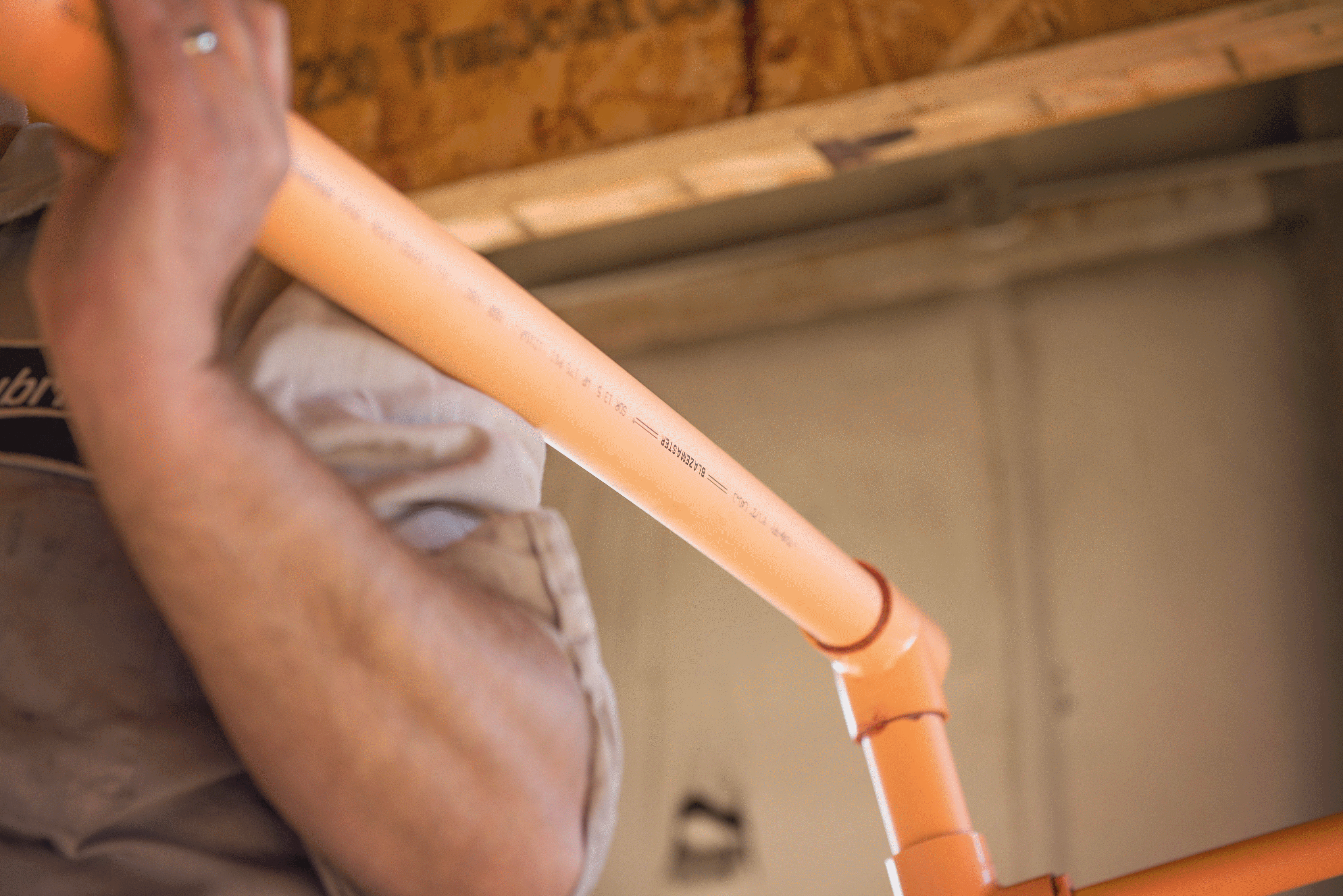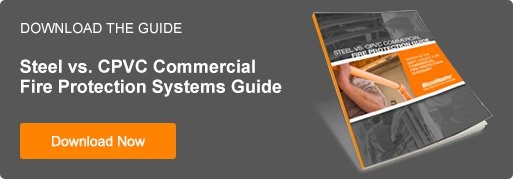Corrosion Resistance Makes BlazeMaster® CPVC the Right Choice for Docks and Marinas
When designing fire protection systems for docks and marinas, it’s a logical choice to specify BlazeMaster® CPVC primarily due to its corrosion resistance. However, there is some misunderstanding in the market that these types of facilities are always considered “ordinary hazard” under NFPA 13, which means steel pipe must be used. In fact, fire officials have flexibility to classify these facilities as light hazard based on a variety of factors.
Type of facility. Terms like “piers” and “marinas” cover a wide range of structures. Some structures are made of combustible wood, while others are constructed with more fire-resistant steel or concrete. A marina or dock will typically include an area where boats are kept along with fire-prone gasoline, but often extend to include an area with restaurants, shops and offices. All these facilities will need to be protected by a fire suppression system, but a fire official will take these diverse settings into consideration in evaluating which materials are right for the job.
Susceptibility to corrosion. Steel pipe will often corrode in less than 10 years, especially in coastal areas where salt air accelerates corrosion. By contrast, BlazeMaster CPVC will never corrode.
The need for flexibility. Docks and marinas in areas with tides or seasonal flooding need to be able to move with the rising and falling waters. This constant flexing can cause steel pipe to break, while CPVC is inherently flexible and will retain its performance.
Proximity to a firehouse. A fire official will consider response times in addressing an owner’s need for a fire sprinkler system that has longevity and will not corrode and fail prematurely in these types of applications. Often that includes an evaluation of average emergency response time to the specific location of the dock or marina. When all things are considered, often the fire official will allow light hazard standards to be applied.
Owner’s request. In working with a fire official, the facility owner can express his or her preference for materials and other details about the fire protection system. Most fire officials will take this input into consideration, especially when one or more of the conditions stated above.
If the facility is classified as light hazard, BlazeMaster pipe and fittings can be used. The system must be installed per the listing requirements and always refer to the manufacturer’s installation instructions. If the facility is classified as ordinary hazard, BlazeMaster pipe and fittings should not be installed.
Decades of Performance
Long-term performance is a key benefit of CPVC. For instance, the fire protection system at a Northern California marina, piped with BlazeMaster CPVC, has been installed and performed without problems since the late 1980s – more than 30 years.
Before BlazeMaster CPVC, the marina’s steel-based system was prone to corrosion and breakage, as runoff from the Sierra Nevada mountains in the spring raises and lowers the docks by up to 20 feet. Since BlazeMaster CPVC is more flexible than steel, it has readily been able to meet the challenge.
This success is replicated in docks and marinas around the country in different climates and demanding situations.
The BlazeMaster CPVC Advantage
Docks and marinas present specific challenges where BlazeMaster CPVC provides a clear advantage over steel. In addition, BlazeMaster CPVC offers:
Lower Cost. BlazeMaster CPVC offers up to a 30% material cost advantage over steel. In addition, installation costs are lower because it requires less labor.
Easy Installation. Steel is heavy and requires special equipment to move around the job site. Typically, two or more installers are required, and parts must often be pre-fabricated off-site. By contrast, BlazeMaster CPVC installation is often a one-person job using a quick, one-step solvent cement process that moves quickly with less noise and disruption.
Superior hydraulics. CPVC offers a smoother surface, so water flows more easily to ensure enough liquid reaches a fire to suppress it. BlazeMaster CPVC has a Hazen-Williams C-Factor of 150 and retains it throughout its life. By contrast, steel starts with a C-Factor of 120, which declines by 50% over time. This smoothness means smaller CPVC pipes can be used, a further saving on installation costs.
BlazeMaster CPVC has proven its performance with more than 2 billion feet installed over the past 30 years in more than 60 countries. From docks and marinas to a vast array of homes and light commercial buildings, BlazeMaster CPVC is the most specified material of its kind in the world.


